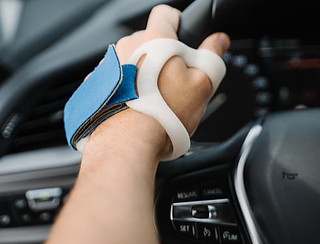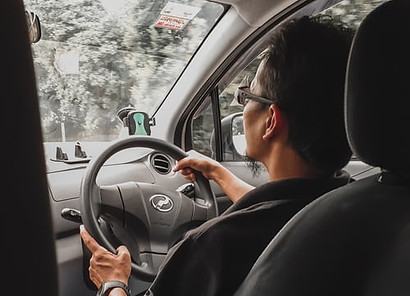
Living and Driving
Autonomous vehicle market research, based on assisted driving technologies for aging populations. Assisted driving covered: health monitoring, driving habits, and current/future support for elders.
Vehicle safety standards in the US were first implemented on a federal level in 1968 and their progress has consistently saved many lives, now Autonomous Vehicles (AV) can possibly reinforce their standards for drivers, passengers, and more.
"The major factor in 94 percent of all fatal crashes is human error. So Autonomous Driving Solutions (ADSs) have the potential to significantly reduce highway fatalities by addressing the root cause of these tragic crashes."
- U.S. Department of Transportation
"(Elder)Drivers who considered themselves at least a little better than others of their age were more than four times more likely to be unsafe drivers compared to others who believed they were comparable to or worse than other drivers of their age..." (2)
Roles - Market Researcher, Design & Data Lead
Responsibilities - Data communication, design thinking, survey creation/delivery
Time - 16 Weeks/ 4 Months
Industry - Automotive, Design, and Market Research
Partners - Aperio Insights, Toyota
Initial Research & Impediments
This market research opportunity connected us to many unknown factors; public perception, trust in companies, versus the trust in US federal government and their care for healthcare and data privacy information. All of those factors are rapidly changing in todays world, making them harder to communicate for adaption and even harder to predict on development for other project partners.



Environmental Conditions:
-
Bad Roads
-
Weather
Driver Health:
-
Health Issues
-
Mood and medications
Vehicle Capacity:
-
Additional Sensors
-
Maintenance and safety
Terrain, animals, and others drivers must be accounted for when providing assisted driving instructions.
Driving behaviors are directly tied with health and mood, meaning that regular self checks are necessary.
Bald tires, bad breaks, and other mechanical issues can poorly affect drving leading to frequent diagnostics.
Some elders in the Living and Driving project may have had some familiarity with AV technologies while others could be facing mobility issues or barriers with technology. As elder drivers age and develop health issues, instilling safe driving habits and good health behaviors will promote safety and foster a more independent lifestyle for years to come. These outcomes can be potentially further improved with AV technology in uncommon or extreme driving conditions/ scenarios.
Autonomy Levels & Implications
0 - No Automation

1 - Driver Assistance

2 - Partial Automation

3 - Conditional Automation

4 - High Automation

5 - Full Automation

Level 0 automation consists of the "Traditional vehicle" or lack of AV technologies consist of all vehicles up until most US domestic 2008 vehicle models.
Level 1 automation has some of the "commonplace" advancements such as electronic stability control or blind spot detection but person is the essential driver.
Level 2 automation requires the driver to be engaged for all monitoring tasks but with some assistance like adaptive acceleration or some lane drifting correction.
Level 3 automation is not yet available for all vehicles, this technology would be able to accelerate, steer, and monitor road yet require human assistance in most driving scenarios.
Level 4 automation can be fully independent for driving under commonplace driving conditions, this will not be the case in situations with bad weather or in times for human need.
Level 5 automation does not need human driving interference for any matters, there is still the option to drive if wanted but the vehicle has the capacity for all terrains/ functions.
Survey Development and Canvassing
Conducted market research through 30 in-depth interviews with individuals aged 55+ to research and develop potential driving assistance technologies. Surveying included gauging public trust, tailoring technology approaches, all while planning for different demographics and regions.
The survey gauged both of the lived experiences, AI familiarity, comfort with their own driving, and how their comfort with different driving modes and safety checks scenarios.
See the survey here

This design oriented problem has the potential to promote independence within the elderly community by enabling them to monitor drving habits and prevent any transit problems
Gauging the comfort of level 3 autonomy
Developing public surveys in remesh allowed for us as researchers to ask our demographics about how their seemingly "carefree" driving habits would be augmented with autonomous driving technologies.
Participants were curious about a solution that would nudge them toward better habits, including driving. Early action is best, but most consumers did not recognize the need to take action until their health or driving abilities were or would be at risk. This did increase their interest with an increased interest of Vehicle Capacity in the following ways;
Additional Sensors
Crash Collision Prevention
Infrared Sensors
Vehicle Connectivity/ Focus
Maintenance and Safety
Consistent Vehicle Reminders
Motor Functions
Manufactured Standardizations
Market Research Report
"Consumer education programs are encouraged to cover topics such as ADSs’ functional intent, operational parameters, system capabilities and limitations..." - U.S. Department of Transportation
The US Department of Transportation may not be equipped to develop the hands on implementation for this kind of driving connection to elder drivers yet many manufacturers will find a more open-minded generation of drivers which have relatively positive perceptions to level 3 autonomous driving technologies.